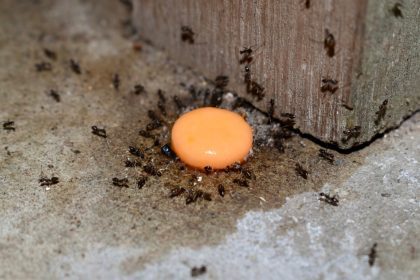The Minnesota Pollution Control Agency has activated emergency air quality protocols for multiple regions across the state as smoke from Canadian wildfires threatens to create hazardous breathing conditions throughout the weekend. Officials issued warnings covering west central, north central, northwest, and central Minnesota, with particular concern for cities including Bemidji and East Grand Forks.
The alert will remain active from 6 a.m. Saturday through 6 p.m. Sunday, representing a 36-hour period during which air quality is expected to deteriorate significantly. Environmental officials anticipate that fine particle concentrations will reach red levels on the Air Quality Index, indicating conditions that pose health risks to all residents regardless of their typical sensitivity to air pollution.
Wildfire smoke travels across international borders
Smoke originating from active wildfires in Saskatchewan and Manitoba is expected to drift southward into Minnesota, carried by atmospheric conditions that transport particulate matter across vast distances. The transboundary nature of this air quality emergency demonstrates how environmental challenges can affect regions far removed from their original sources.
Canadian wildfire activity has intensified during recent weeks, creating substantial smoke production that atmospheric patterns are channeling toward populated areas in the upper Midwest. The fires’ scale and intensity have generated enough particulate matter to significantly degrade air quality across multiple states and provinces.
Weather patterns and wind directions play crucial roles in determining which areas will experience the most severe impacts from wildfire smoke. Current meteorological conditions are directing the heaviest smoke concentrations toward Minnesota’s northern and western regions, though impacts may shift based on changing atmospheric dynamics.
Red air quality index signals universal health concern
The projected red Air Quality Index classification indicates that air pollution levels will reach concentrations considered unhealthy for all population groups, not just those typically sensitive to poor air quality. This designation represents a significant escalation from yellow or orange alerts that primarily affect vulnerable populations.
Red AQI levels suggest that fine particulate matter concentrations will exceed 150.5 micrograms per cubic meter, creating conditions where even healthy adults may experience respiratory discomfort or other health effects. The widespread nature of potential health impacts requires comprehensive public health responses and individual protective measures.
The severity of the anticipated air quality deterioration has prompted officials to recommend behavioral changes for all residents rather than limiting advisories to sensitive groups alone. This broad approach reflects the serious nature of the expected conditions and their potential to affect anyone spending time outdoors.
Multiple vulnerable populations face elevated risks
Health officials have identified several population groups that face particularly serious health risks during periods of poor air quality caused by wildfire smoke. Individuals with existing respiratory conditions such as asthma face increased risks of symptom exacerbation and potential medical emergencies requiring immediate intervention.
People with heart disease represent another high-risk group, as particulate matter can trigger cardiovascular complications and worsen existing cardiac conditions. The fine particles associated with wildfire smoke can penetrate deep into lung tissue and enter the bloodstream, potentially affecting heart function and circulation.
Pregnant individuals, children, and older adults also face elevated health risks during air quality emergencies. Children’s developing respiratory systems make them particularly vulnerable to particulate matter exposure, while pregnant women must consider potential impacts on both their own health and fetal development.
Comprehensive behavioral recommendations address health protection
Officials recommend that all residents avoid prolonged outdoor activities during the alert period, particularly those involving physical exertion that increases breathing rates and particulate matter intake. This guidance applies to exercise, yard work, and recreational activities that typically occur outdoors during weekend periods.
The recommendation to limit outdoor exertion reflects understanding that increased breathing during physical activity results in greater exposure to harmful particles suspended in the air. Even activities that seem routine during normal conditions can become health hazards when air quality deteriorates to red index levels.
Residents should prioritize indoor activities during the alert period while ensuring that indoor air quality remains protected through appropriate ventilation management and filtration systems when available. The goal involves minimizing exposure while maintaining reasonable quality of life during the emergency period.
Environmental responsibility measures support community protection
Beyond personal protective measures, officials encourage residents to reduce activities that contribute additional pollution to already compromised air quality. Vehicle idling represents a controllable source of particulate matter that can worsen local conditions when combined with wildfire smoke infiltration.
Outdoor burning restrictions become particularly important during air quality emergencies, as any additional combustion sources can significantly worsen local air quality conditions. Residents should postpone burning activities until air quality returns to acceptable levels and wind patterns clear existing pollution.
These community-wide behavioral modifications can help prevent local air quality from deteriorating beyond levels created by distant wildfire smoke alone. Collective action by residents can make meaningful differences in protecting community health during environmental emergencies.
Indoor air quality management becomes critical priority
Keeping windows and doors closed represents the primary defense against wildfire smoke infiltration into homes and buildings. This approach prevents outdoor air pollution from entering indoor spaces where residents spend most of their time during air quality alerts.
Air conditioning systems should be set to recirculate indoor air rather than drawing fresh air from outside, helping maintain cleaner indoor environments during periods of poor outdoor air quality. Residents without air conditioning should consider alternative cooling strategies that don’t require opening windows.
Indoor air filtration systems, when available, can provide additional protection by removing particulate matter that may infiltrate buildings despite closed windows and doors. Portable air cleaners with appropriate filtration capabilities can supplement building ventilation systems during emergency periods.
Medical attention guidelines address serious health concerns
Officials emphasize that residents experiencing severe respiratory symptoms, chest pain, or other serious health effects should seek immediate medical attention rather than waiting for air quality conditions to improve. Emergency medical services remain available and prepared to address health complications related to poor air quality.
Individuals with existing health conditions should monitor their symptoms carefully and maintain access to necessary medications throughout the alert period. Preventive measures may include adjusting medication schedules or dosages under medical supervision to account for increased environmental stressors.
Healthcare facilities are typically prepared for increased patient volumes during air quality emergencies and can provide appropriate treatment for smoke-related health effects. Residents should not hesitate to seek medical care when experiencing concerning symptoms during poor air quality periods.
Duration and geographic scope reflect serious environmental impact
The 36-hour duration of the air quality alert indicates that atmospheric conditions are expected to maintain poor air quality throughout most of the weekend, preventing quick resolution of the environmental emergency. Extended exposure periods increase health risks and require sustained protective measures.
The geographic scope covering multiple regions across Minnesota demonstrates the widespread nature of the environmental impact and the need for coordinated public health responses. The affected areas include both urban and rural communities that must implement similar protective strategies.
Weather forecasts suggest that air quality conditions may begin improving late Sunday as atmospheric patterns shift and disperse the wildfire smoke concentrations. However, residents should continue monitoring official updates for changes in alert status and recommendations.
Historical context highlights recurring environmental challenges
Wildfire smoke impacts on Minnesota air quality have become increasingly common during recent years as climate change and forest management practices influence fire behavior across North America. These recurring events require communities to develop familiarity with protective measures and emergency responses.
The transboundary nature of wildfire smoke pollution demonstrates how environmental challenges transcend political boundaries and require international cooperation and coordination. Canadian wildfire management and suppression efforts directly affect air quality in multiple U.S. states.
Understanding these patterns helps residents and officials prepare for similar future events while highlighting the importance of broader environmental policies addressing wildfire prevention, forest management, and climate change mitigation strategies that could reduce the frequency and severity of such emergencies.
Minnesota’s air quality emergency illustrates how distant environmental events can create immediate local health risks that require comprehensive community responses, individual protective measures, and coordination between environmental monitoring agencies and public health officials to protect resident welfare during challenging atmospheric conditions.


















